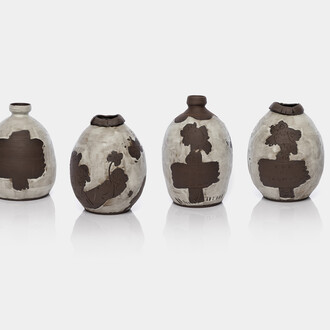Drawing from the Bank of America Collection, The Wyeths: Three Generations provides a revealing survey of works by N.C. Wyeth, one of America’s finest illustrators; his son Andrew, an important realist painter; Andrew’s son Jamie, a popular portraitist; and members of the extended family. Visitors will explore 74 paintings and drawings by artists from three generations of the Wyeth family, all showcasing a commitment to realism, technical brilliance, and narrative sensibility.
N.C. Wyeth (American, 1882–1945) has long been considered one of the nation’s leading illustrators, a versatile artist who was able to traverse fantasy and realism. In the early 1900s, he studied with illustrator Howard Pyle in Delaware. In 1911, he built a house and studio in nearby Chadds Ford, Pennsylvania. Later, he bought a sea captain’s house in Maine and in 1931 built a small studio, which he shared with his son Andrew and his daughters. The exhibition includes illustrations for books by Robert Louis Stevenson and Washington Irving as well as historical scenes, seascapes and landscapes.
Born 100 years ago, Andrew Wyeth (American, 1917–2009) is one of the United States’ most popular artists, known for his haunting, detailed paintings in the American Realist tradition. He was influenced by the works of Winslow Homer, whose watercolor technique he admired, as well as by the art of Howard Pyle and his father N.C. While Andrew painted recognizable images, his use of line and space often imbue his works with an underlying abstract quality. The exhibition includes important works from across his career.
Although not as well-known as her brother, Henriette Wyeth (American, 1907-1997) painted striking portraits, landscapes, and still lifes. She is also represented in the exhibition, as is her husband, Peter Hurd (American, 1904-1984), who chronicled the landscape of the American West.
Jamie Wyeth (American, b. 1946), like his father and grandfather, paints subjects of everyday life, turning his wry, playful eye to the landscape, animals and people of Pennsylvania and Maine. In contrast to his father—who painted with watercolor, drybrush and tempera—Jamie works in oil and mixed media, creating lush painterly surfaces. The 17 paintings in the exhibition represent all periods of his career.
“We’re excited for our community to see the evolving legacy of one of America’s most illustrious artistic families,” said Brian Ferriso, The Marilyn H. and Dr. Robert B. Pamplin, Jr. Director and Chief Curator of the Portland Art Museum. “As the Museum approaches its 125th anniversary this fall, it’s clear that a big part of our mission is to celebrate, support, and spark the spirit of creative inquiry that the Wyeths represent, from one generation to the next. We are grateful to Bank of America for its generosity in lending this collection.”
The Wyeths: Three Generations comes to Portland through Bank of America’s Art in Our Communities program, which has loaned more than 120 exhibitions worldwide since the program’s launch in 2008. A longstanding supporter of the Portland Art Museum’s mission, Bank of America made a lead $600,000 endowment gift in 2008 to support free access for all school tours at the Museum. Thanks to this gift and to the other donors who joined with Bank of America, more than 1,000 schools and 30,000 students visit the museum for free on a yearly basis. In addition, Bank of America sponsors Museums on Us, which provides free access to Bank of America credit card holders over the first full weekend of every month at Portland Art Museum.
“We are delighted to support the Portland Art Museum and help give our communities an opportunity to see Wyeths’ rich contributions to our cultural heritage,” said Roger Hinshaw, Market President of Bank of America for Oregon and Southwest Washington. “Bank of America believes the arts matter: they help economies thrive, help individuals connect with each other and across cultures, and educate and enrich societies. We are proud to support more than 2,000 arts organizations worldwide that provide inspirational and educational sustenance to the communities we serve.”
















